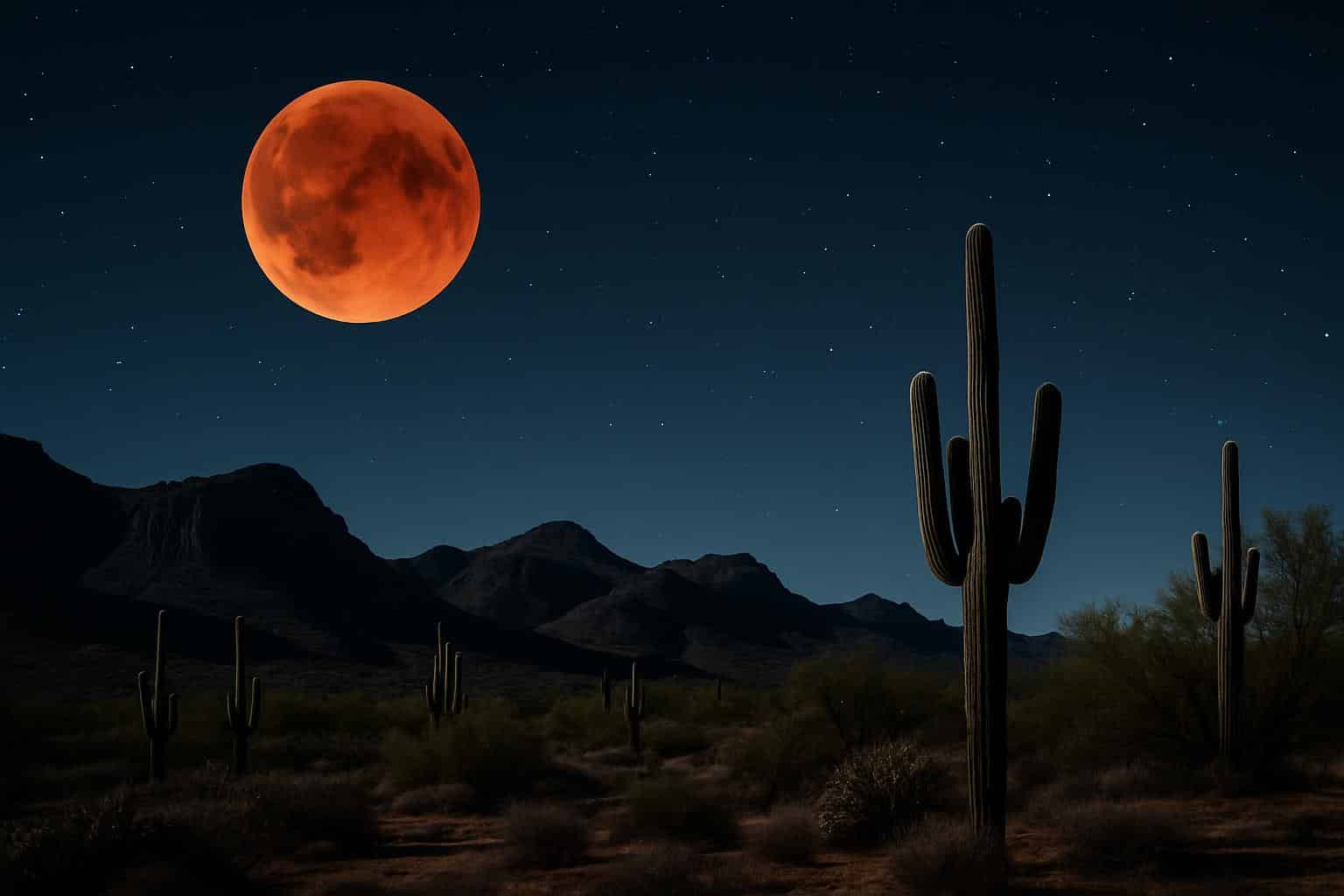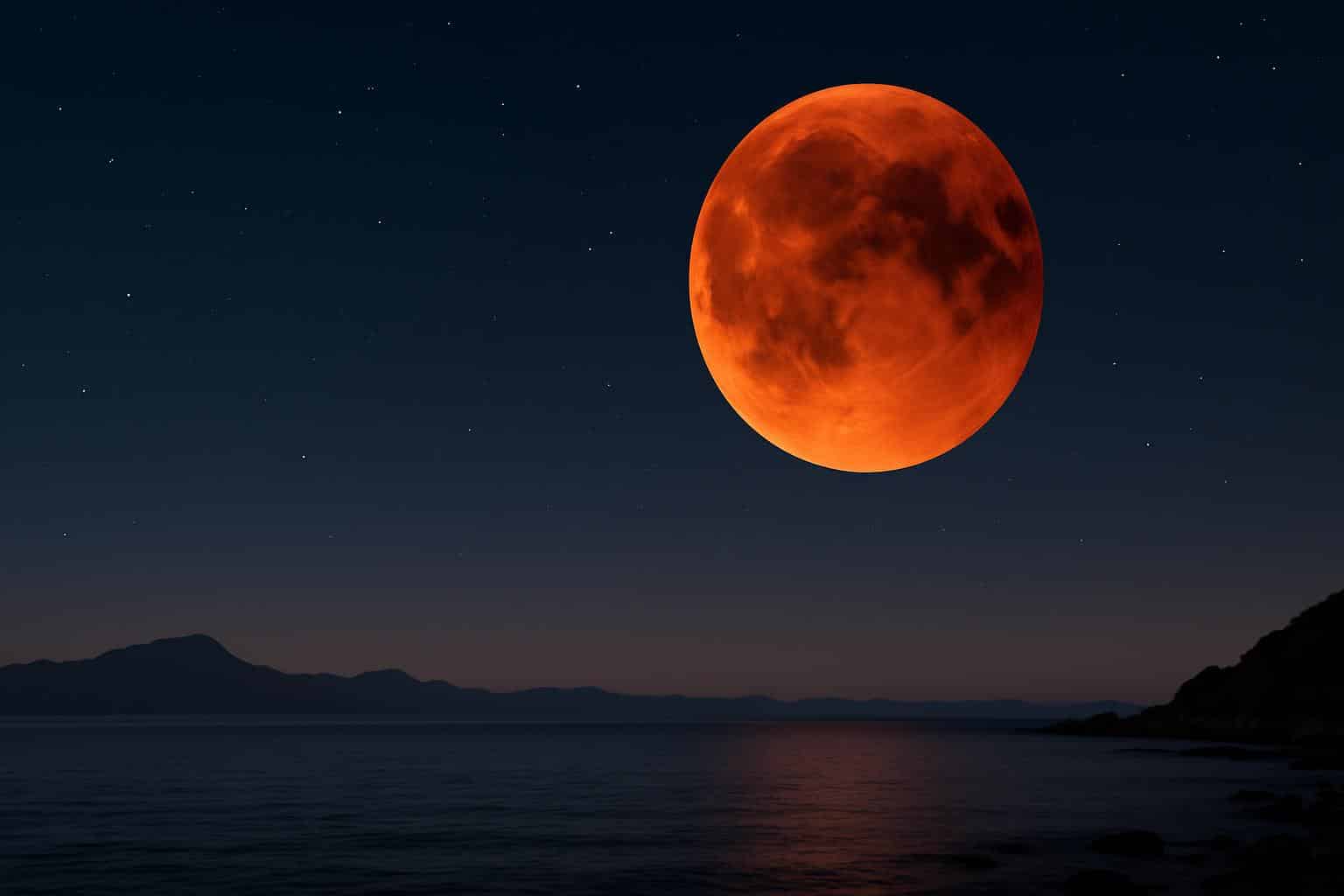A deep, coppery “blood moon” will be visible for more than an hour shortly after dusk this weekend, depending on where you live, according to astronomers. For those in Eastern Africa through to the Middle East, and also in Central and South Asia, China, Southeast Asia and Australia, the full moon will become briefly immersed in Earth’s shadow, sending it cry red for about 82 minutes. Assuming clear weather, that’s also the visibility zone, and well over four billion people are in it.
Who Gets The Best View
The sweet spot is from East Africa across the Indian Ocean to Australia, where the entire sequence — penumbral shading, partial phases, full totality and the moon’s slow return — will be visible in evening or late-night hours. Kenyan, Tanzanian and Ethiopian observers can anticipate the Moon to appear sufficiently high for comfortable viewing, while The Middle East, the Arabian Peninsula and the Levant will benefit from an easy, prime-time show.

Throughout the Indian subcontinent and Sri Lanka, the show stretches from late in the evening through the first half of the night. Further east, parts of China and Southeast Asia have totality well-positioned — including cities like Beijing, Shanghai, Bangkok, Hanoi, Kuala Lumpur and Singapore. In Australia, the totality happens in the late evening and early hours with even coastal cities like Sydney and Brisbane seeing a particularly attractive moon at comfortable elevations and an impressive, one for Perth, as the Moon is climbing.
Where It Will Not Be Visible
North America is not within the path of this event. The full Moon will rise dramatically for the continent, but the eclipse will unfold on the other side of the world. Most of South America will also miss out on totality. If you happen to be traveling somewhere or are on the periphery of the visibility zone, you should consult local conditions as published by trusted sources such as national observatories, timeanddate and your meteorological service, since the exact timing of moonrise as well as shadow geometry can differ significantly from by region.
What To Look For
As Earth’s penumbral shadow darkens the Moon, you’ll first see a faint gray smudge. Next comes the bite of the umbra, which slowly rips a dark arc across the Moon until it is completely submerged and each infectuously varying shade of rust, copper or even deep burgundy is apparent. This time totality lingers for about 82 minutes — long enough to see the color change and the star field around the Moon come into sharper focus. The partial phases serve as bookends to totality, extending the total experience to multiple hours.
Why The Moon Turns Red
As NASA explains, during totality the Moon receives only the sunlight refracted through Earth’s atmosphere, the same kind of filtering that makes sunsets red. Minute aerosols and dust preferentially reflect blue light, allowing red light to curve into Earth’s shadow and to flood the moon’s surface. The eclipse’s brightness is frequently rated on the seven-point Danjon scale, from L=0 (very dark, nearly invisible) to L=4 (bright copper). An increase in atmospheric dust — be it from wildfires far away or volcanic aerosols — can push the look to the darker side.

City-by-City Pointers
In Nairobi and Addis Ababa, look for the Moon to be high enough for easy naked-eye viewing from parks and rooftops. In Dubai, Doha and Riyadh, opt for a viewing spot with a low eastern and southern horizon to watch the partial phases. Viewing Conditions for Mumbai, Delhi or Colombo Mumbai, Delhi and Colombo observers should prepare to have good views, as the Moon will climb to a relatively comfortable altitude at totality. … Slated to be most colorful in Beijing and Shanghai, where the Moon will appear a saturated red against the relatively dark sky, the Bangkok and Ho Chi Minh City sites often afford maximal color contrasts, when humidity isn’t through the roof (and ceiling). In Sydney & Melbourne, coastal views with headlands provides vastness of view and the interesting foregrounds for photography.
How To Watch And Photo
Unlike solar eclipses, lunar eclipses are safe to watch as they are not painful for the eyes. Binoculars bring out the lunar maria and the sharp line of Earth’s shadow, and a small telescope shows rich detail along the limb. For photography, use a tripod; set a low ISO value for the partial phases and then increase sensitivity and exposure duration in totality as the Moon becomes darker — bracketing can be helpful. Add a skyline or a landscape in order to anchor the red Moon and show some scale; the “big moon” near the horizon is a tried-and-true visual crowd-pleaser.
Weather And Visibility Tips
Clouds are the real spoiler. The Royal Astronomical Society and national meteorological bureaus observe that the dry-season atmospheres over some East African and Australian regions bode well for clear skies, whereas monsoon activity in various regions throughout South Asia and typhoon-prone parts of East Asia could produce cloud and haze. Even a light haze can intensify the eclipse’s red hues. And if the forecasts are looking marginal, a short drive to higher ground or a coastal breeze corridor may be all that stands between a miss and memory.
What’s Next
The next total eclipse of the Moon will favor observers in North America, Australia and East Asia and will provide yet another opportunity to observe a blood-red Moon — demonstrating that if this weekend the weather doesn’t play along, the cosmos has a generous schedule.
In the meantime, savor the spectacle: a full Moon blushing like a lantern under the influence of light from Earth’s sunrises and sunsets.

